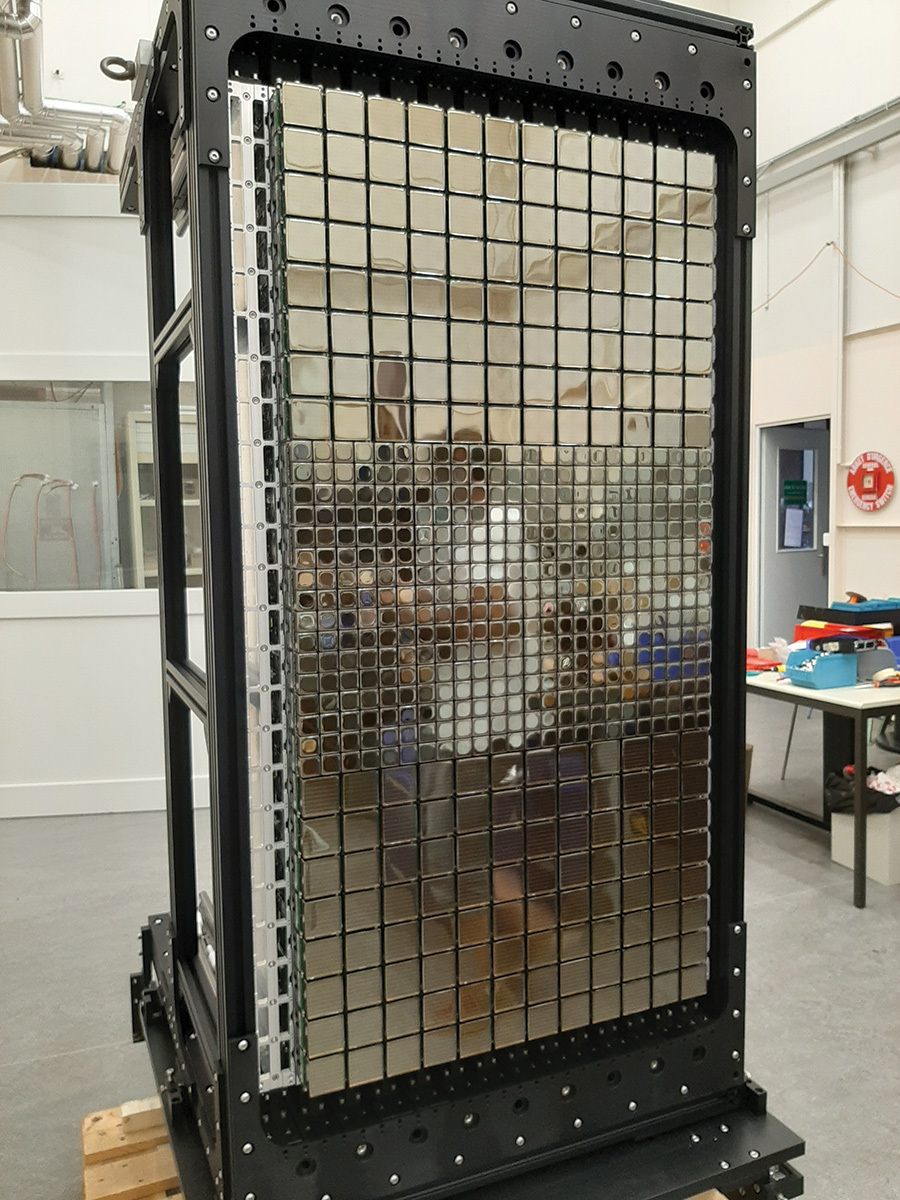The LHCb RICH detectors are built for particle identification. Lying on either side of LHCb’s magnet, the detectors are positioned to intercept particles flying at different angles. RICH detectors work by measuring the Cherenkov light emitted when a charged particle passes through a certain medium (in this case, a dense gas). As it travels, the particle emits a cone of light, which the RICH detectors reflect onto an array of sensors using mirrors. The shape of the cone of light depends on the particle’s velocity, enabling the detector to determine its speed. This information can be combined with the particle trajectory to deduce its identity. The two RICH detectors are responisible for identifying a range of different particles that result from the decay of B mesons, including pions, kaons and protons. The LHCb Padova group is involved in the construction of the new RICH detectors for the upgrade of the experiment in 2021. The group is working on the test and quality assurance of the Multi-Anode PMTs (MaPMTs) and in the construction of the cold-bars where the MaPMTs will be mounted. In addition, Padova is taking part to the test-beams at CERN for the commissioning of the RICH acquisition system (DAQ) and in the analyis of the acquired data. In particular, the Padova group is currently working on defining the procedure for setting the optimal working point at which the MaPMTs will operate during Run3 data-taking.



